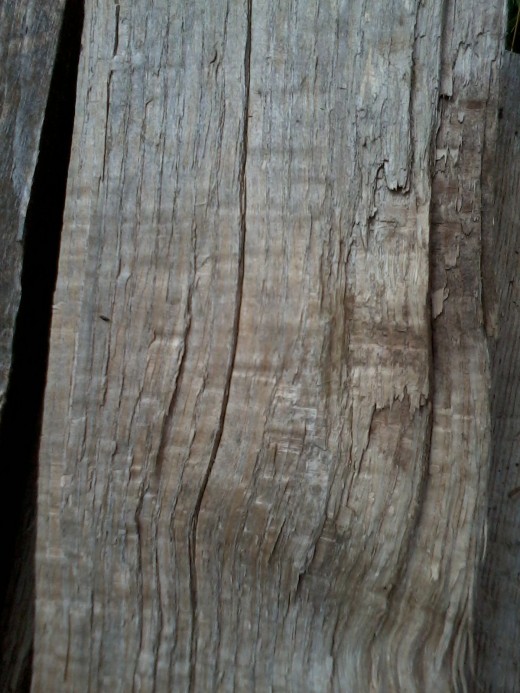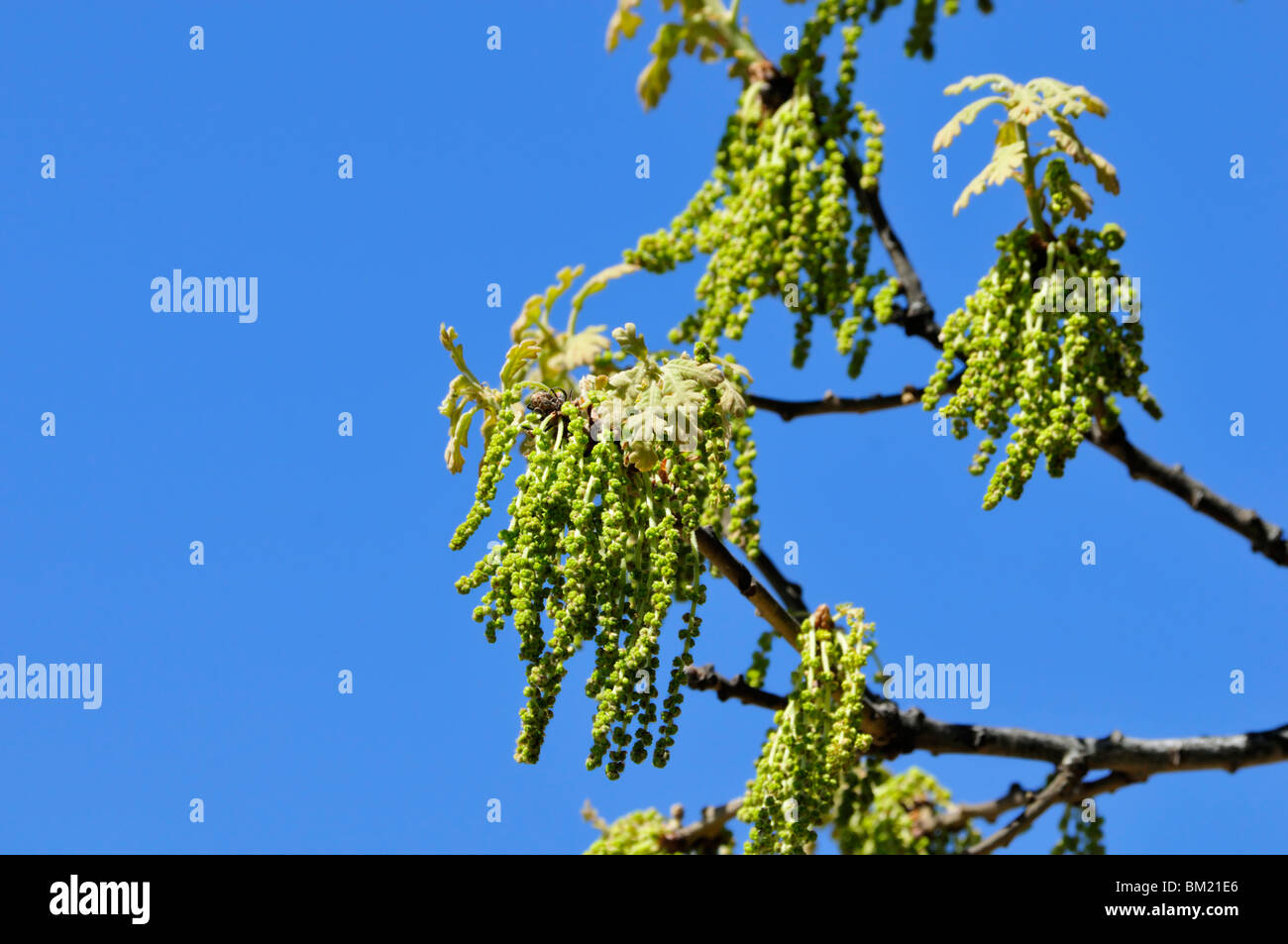- What Does Blackjack Oak Look Like Wood
- What Does Blackjack Oak Look Like Look
- What Does Blackjack Oak Leaves Look Like
Faunal Associations: Like other oaks, Blackjack Oak (Quercus marilandica) is a food plant of many insects. Examples of insects that are known to feed on this oak include leaf beetles (Metachroma laevicolle, Xanthonia striata), nut-feeding larvae of weevils (Curculio humeralis, Curculio longidens), aphids (Myzocallis punctatus), armored scales (Melanapis obscura), leaf-mining larvae of moths. Blackjack oak does not like competition and needs full sun, but otherwise experiences few health problems. If planted, soil drainage and pH could be an issue for tree health. Blackjack oak can reach heights of 40-50 feet and crown diameters of 40-60 feet. The blackjack oak (Quercus marilandica) has three lobes so shallow that the leaf almost has a pear shape to it.
Texas is famous for its oak trees. In fact, there are more than 50 varieties native to Texas. Oak trees are important for wildlife because they provide acorns for food, and the large trees provide shelter within their huge branches. Even after an oak tree dies in the wild, it provides shelter as it slowly decays. Some oak trees grow more quickly than others and make good trees for landscaping. These trees can also help decrease your utility bills, protect against erosion, add to your landscape's aesthetic appeal, buffer your home from strong winds and add to the value of your home. Hollywood casino amphitheater seating chart.
What Does Blackjack Oak Look Like Wood
Oak Tree Leaves: Similarities And Differences
There are about 60 different types of oak trees which are native to North America. These trees fall into two primary categories: red oaks and white oaks. Oaks have what is called 'alternate' leaves, which means that only one leaf emerges from the stem, which gives the appearance that the leaves are alternating from one side to another. Depending on the species, the leaves can be a different shape or have a different number or shaped 'lobes', which are the parts of the leaf which curve outward from the primary vein.
A post oak leaf is usually dark green, thick and leathery. These leaves usually measure between four and six inches and have five lobes. Live oak leaves look very different from post oak leaves, with an oval shape and a glossy surface which is usually between two and four inches long. Bur oaks have leaves that resemble post oaks. These leaves are up to a foot long with five to nine lobes. Red oaks have leaves which come to a point at the ends instead of the rounded tips of post oaks and live oaks. These trees have between seven and nine lobes. To identify other species which grow in Texas by the shape and size of the leaf, consult the Trees of Texas database.
Types of Oak Trees in Texas
Which varieties of oak trees grow best in Texas, and what are their characteristics? Read on to learn more.
Post Oak
The post oak (Quercus stellata) grows in most parts of Texas and is one of the most important oak trees for wildlife because of the large number of acorns it produces. This type of oak is so common that an entire ecoregion is named after it: Post Oak Savannah. Post oak trees are not adapted for landscape use because they are difficult to transplant and have a slow growth rate. They often die when the soil around their base is disturbed or compacted. Post oaks prefer dry, sandy soil. They shed their distinctive cross-shaped leaves in the fall, and the fall color is brown or red.

Post oaks thrive in Texas because they require little water and tolerate heat well. Mature trees can grow to a height of 50 feet or more, with a diameter of up to two feet. Since the tree's root system is shallow, post oaks are sensitive to excessive watering and the impact caused by new construction. To protect these oaks in your landscape, avoid hardscaping near the boundary of the tree's root system to minimize soil compaction. Do not remove or add dirt or other materials within the root system boundary. To avoid overwatering, check drainage in your yard to make sure the soil around the tree's base doesn't get too moist and to avoid tree rot. Resist the urge to mulch around the tree to curb water buildup.
What Does Blackjack Oak Look Like Look
Live Oak
Although the live oak (Quercus virginiana) only grows to 50 feet tall, it can spread out up to 100 feet with big limbs reaching the ground in all directions. The live oak owes its name to the fact that the tree is evergreen rather than deciduous, as most other oak species are. The limbs of a live oak are strong and thick, and the tree is one of the slower growing varieties of oak trees. Live oaks are long-lived trees. The oldest known specimen in Texas is in Goose Island State Park in Rockport and is more than 1,200 years old. The live oak is a semi-evergreen that sheds its leaves in late winter, but they are immediately replaced with new leaf growth.
Gardeners have long found it a challenge to add grass and other plants to a landscape with live oak trees, since the large, thick canopy makes for a shady understory. In addition, live oak roots and leaves produce a chemical which prevents plant growth nearby, thanks to an adaptation called allelopathy. Because they tend to require less water and are heat-tolerant, shade-tolerant native plants and shrubs are often the best additions to a landscape with a live oak. As with other species of oaks, live oak roots grow close to the surface, making them vulnerable to damage by root fungus diseases, trenching, digging, traffic and soil compaction. Pruning may become necessary if long, heavy limbs pose a risk of limb failure over time as the tree ages.
Bur Oak
The bur oak (Quercus macrocarpa), also known as the prairie oak, is known for its large leaves and big acorns. This species is native to grassland prairies of Central and West Texas but is adaptable to most areas of the state. It has a medium growth rate but becomes such a magnificent tree that it is worth the wait. Larger trees have a large tap root that makes it difficult to transplant, so when buying a bur oak tree for planting in the landscape, buy a tree that is three to five feet tall. The bur oak's fall color is brown, and it sometimes holds its dried leaves well into the winter. The bur oak is very drought tolerant once it is established.

Post oaks thrive in Texas because they require little water and tolerate heat well. Mature trees can grow to a height of 50 feet or more, with a diameter of up to two feet. Since the tree's root system is shallow, post oaks are sensitive to excessive watering and the impact caused by new construction. To protect these oaks in your landscape, avoid hardscaping near the boundary of the tree's root system to minimize soil compaction. Do not remove or add dirt or other materials within the root system boundary. To avoid overwatering, check drainage in your yard to make sure the soil around the tree's base doesn't get too moist and to avoid tree rot. Resist the urge to mulch around the tree to curb water buildup.
What Does Blackjack Oak Look Like Look
Live Oak
Although the live oak (Quercus virginiana) only grows to 50 feet tall, it can spread out up to 100 feet with big limbs reaching the ground in all directions. The live oak owes its name to the fact that the tree is evergreen rather than deciduous, as most other oak species are. The limbs of a live oak are strong and thick, and the tree is one of the slower growing varieties of oak trees. Live oaks are long-lived trees. The oldest known specimen in Texas is in Goose Island State Park in Rockport and is more than 1,200 years old. The live oak is a semi-evergreen that sheds its leaves in late winter, but they are immediately replaced with new leaf growth.
Gardeners have long found it a challenge to add grass and other plants to a landscape with live oak trees, since the large, thick canopy makes for a shady understory. In addition, live oak roots and leaves produce a chemical which prevents plant growth nearby, thanks to an adaptation called allelopathy. Because they tend to require less water and are heat-tolerant, shade-tolerant native plants and shrubs are often the best additions to a landscape with a live oak. As with other species of oaks, live oak roots grow close to the surface, making them vulnerable to damage by root fungus diseases, trenching, digging, traffic and soil compaction. Pruning may become necessary if long, heavy limbs pose a risk of limb failure over time as the tree ages.
Bur Oak
The bur oak (Quercus macrocarpa), also known as the prairie oak, is known for its large leaves and big acorns. This species is native to grassland prairies of Central and West Texas but is adaptable to most areas of the state. It has a medium growth rate but becomes such a magnificent tree that it is worth the wait. Larger trees have a large tap root that makes it difficult to transplant, so when buying a bur oak tree for planting in the landscape, buy a tree that is three to five feet tall. The bur oak's fall color is brown, and it sometimes holds its dried leaves well into the winter. The bur oak is very drought tolerant once it is established.
One of the advantages of adding a bur oak to your landscape is that it is one of the fastest-growing shade trees, growing at a rate of up to two or three feet a year under ideal conditions. In fact, bur oaks are the only other species, other than cottonwoods, which can grow to be up to 10o feet tall. Unlike live oaks, the deep tap root system of the bur oaks allow the species to draw water and anchor the tree, even in the driest conditions. One of the only disadvantages of the tree is its large size and its golf ball-sized acorns, which can get in the way if you are mowing your grass or which can even dent vehicles. Thankfully, bur oaks don't produce many acorns, and resident wildlife will happily help get them out of your yard.
Shumard Red Oak
What Does Blackjack Oak Leaves Look Like
The Shumard red oak (Quercus shumardii), also known as the swamp red oak or spotted oak, can grow up to 120 feet tall and 50 feet wide in moist, well-drained soil. Casino dress up party. The tree is named after Benjamin Franklin Shumard, the state geologist of Texas during the late 1800s. Although it is adapted to the eastern third of Texas, this oak species can be planted in the alkaline soils of Central Texas if there is adequate moisture. One of the distinctive features of this oak species is its leaves, which turn a brilliant red and purple in the fall. The Shumard red oak is a medium- to fast-growing tree.
Similar to other oak species, the Shumard red oak is long-lived and drought tolerant. Unlike post oaks and live oaks, Shumard red oaks tolerate compacted soil and are often incorporated into urban landscapes and even on streets, since they can grow in areas with air pollution, poor drainage and drought. The only downside, as with other oak trees, is the inconvenience of dealing with the tree's acorns.
Oak Wilt
One of the biggest threats to oak trees in Texas is oak wilt, an often deadly fungal disease which compromises the tree's ability to retain water. Although all oaks are vulnerable to this pathogen, red oaks, including Texas oaks, Shumard oaks, blackjack oaks and water oaks are the most at risk. White oaks and live oaks are someone susceptible to oak wilt. Signs of oak wilt include leaves with yellow veins which eventually turn brown, otherwise known as veinal necrosis. Symptoms of oak wilt are harder to find, but can include the presence of fungal mats. To find these spore-producing structures, look for narrow cracks in a tree's bark which lead to hollow areas between the bark and the wood. You may also detect a distinct odor emanating from the fungal mats which attracts many types of insects.
The best way to avoid the spread of oak wilt is by only pruning between the months of July and January. When trimming oak trees, treat freshly-cut wounds with any type of paint to prevent trees from being exposed to insect vectors. Call treasure bay casino in biloxi mississippi map. Immediately dispose of diseased tree material impacted by oak wilt to make sure the disease doesn't spread to other trees on your property.
When It Comes To Trees, ABC Is the Expert
For over 60 years, ABC Home & Commercial Services has been providing a range of top-notch home services to Texans. When it comes to your lawn service needs, you can trust the experts at ABC to care for your trees, help you add to your landscape and even make your vision for your outdoor spaces into a reality. Leave the hard work to us, so you can enjoy a greener, healthier lawn with enhanced curb appeal. Schedule a service today.

